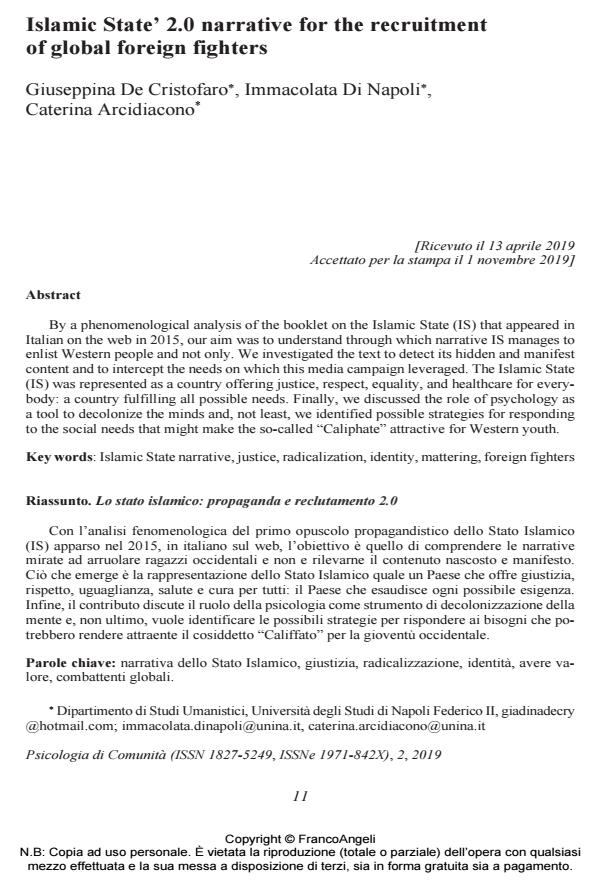Islamic State’ 2.0 narrative for the recruitment of global foreign fighters
Journal title PSICOLOGIA DI COMUNITA’
Author/s Giuseppina De Cristofaro, Immacolata Di Napoli, Caterina Arcidiacono
Publishing Year 2020 Issue 2019/2
Language English Pages 17 P. 11-27 File size 211 KB
DOI 10.3280/PSC2019-002002
DOI is like a bar code for intellectual property: to have more infomation
click here
Below, you can see the article first page
If you want to buy this article in PDF format, you can do it, following the instructions to buy download credits

FrancoAngeli is member of Publishers International Linking Association, Inc (PILA), a not-for-profit association which run the CrossRef service enabling links to and from online scholarly content.
By a phenomenological analysis of the booklet on the Islamic State (IS) that appeared in Italian on the web in 2015, our aim was to understand through which narrative IS manages to enlist Western people and not only. We investigated the text to detect its hidden and manifest content and to intercept the needs on which this media campaign leveraged. The Islamic State (IS) was represented as a country offering justice, respect, equality, and healthcare for every-body: a country fulfilling all possible needs. Finally, we discussed the role of psychology as a tool to decolonize the minds and, not least, we identified possible strategies for responding to the social needs that might make the so-called "Caliphate" attractive for Western youth.
Keywords: Islamic State narrative, justice, radicalization, identity, mattering, foreign fighters
Giuseppina De Cristofaro, Immacolata Di Napoli, Caterina Arcidiacono, Islamic State’ 2.0 narrative for the recruitment of global foreign fighters in "PSICOLOGIA DI COMUNITA’" 2/2019, pp 11-27, DOI: 10.3280/PSC2019-002002